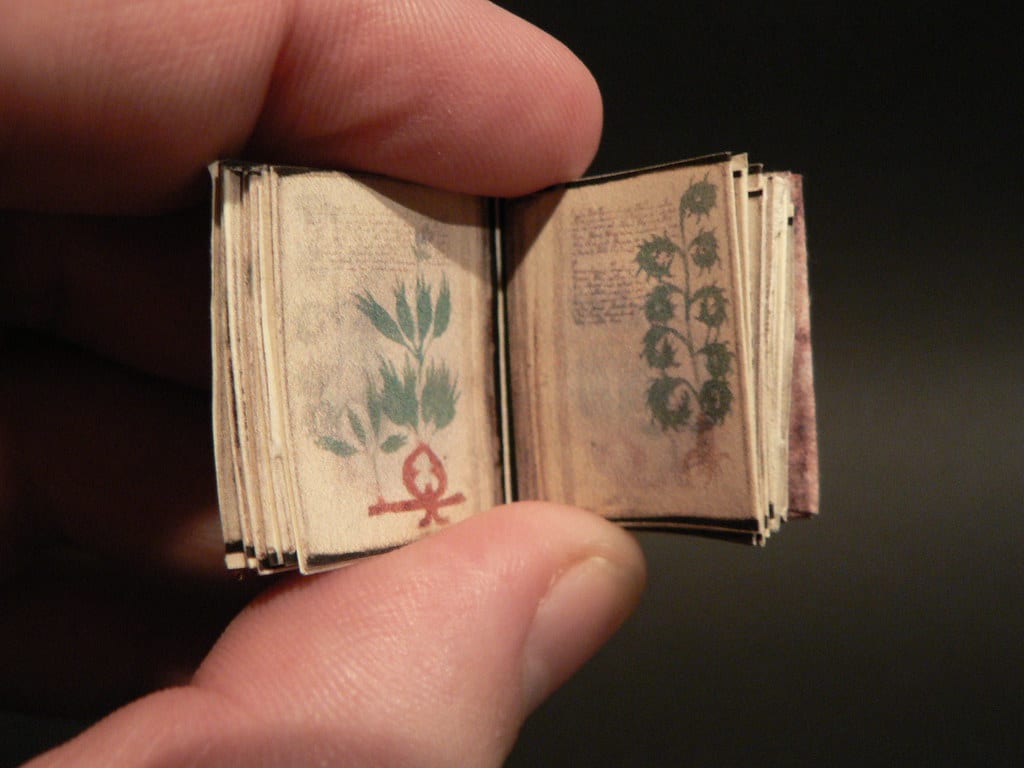The Voynich Manuscript
This remarkable document has never been fully explained

The Voynich Manuscript is one of the stranger items held by the Beinecke Rare Books and Manuscripts library of Yale University. Physically, it is a tiny notebook comprising pages of text and illustrations, mainly of plants, but also including astronomical and astrological charts, recipes, and pictures of naked women. However, the text is in a language that nobody has ever been able to translate or decipher, which means that the origin and purpose of the manuscript are still shrouded in mystery ever since it first came to public attention before World War I.
Wilfred Voynich
Wilfred Voynich (1865-1930) was a dealer in books and manuscripts who operated firstly in London and then in New York. While working in London, having opened his business there in 1895, he undertook regular trips to continental Europe seeking items that he could purchase for sale in his shop. It was on such a trip in 1912 that he acquired the manuscript that has ever since borne his name.
One mystery, apart from the nature of the manuscript, is precisely how Voynich came to own it. He claimed that he had bought it in a castle in southern Europe. However, it emerged in the 1960s, more than 30 years after his death, that he had acquired it from a Jesuit college in Italy, along with some other documents. It also appears that Voynich might have stolen it from the college’s library as opposed to acquiring it legally.
Voynich claimed that there had been a letter accompanying the manuscript and that this was by a 17th-century scientist from Prague who in turn claimed that it had been written by Roger Bacon, the 13th century English philosopher who was known to have been interested in the subjects covered by the manuscript. Voynich, as a dealer, would have had every reason for wanting to believe such a story, to which he added the idea that the manuscript could have been taken to Prague by the Elizabethan alchemist John Dee, who was known to have visited Prague and to have met the Emperor who, according to the supposed letter, had owned the manuscript.
Real or Fake?
This is the question that has been at the heart of the mystery of the Voynich Manuscript ever since its appearance. The suspicion that Voynich had acquired a clever forgery, or perhaps created it himself, was always going to be present in the mind of anyone tempted to part with the large sum of money for which Voynich sought to sell it. However, the best way by which Voynich might possibly have been able to prove its provenance, without the equally mysterious letter that he no longer possessed, would have been to offer a translation of the text, which could then have been compared with other known works by Roger Bacon. It would be remarkable for a forger or dubious dealer to be unable to offer this definitive proof, so the fact that Voynich could never do so does seem to count in his favour as a dealer offering a genuine item for sale.
Carbon dating of the vellum on which the text was written – a technique that was not available during Voynich’s lifetime – has shown that it dates from the early 15th century, and the style of the handwriting matches that time period, thus proving that it could not have been the work of Roger Bacon. However, the fact remains that it could have been forged at an even later date – there is no reason why a modern forger could not have used 15th century vellum and copied the appropriate handwriting style.
But what is it?
That is the other major mystery surrounding the manuscript. The text is written in a language that has resisted all efforts at translation, as it resembles no known language and the characters are not recognizable as letters in any known alphabet. No codebreaker has been able to suggest a possible cipher that might be of use.
At first sight, the notebook appears to be a herbal, by which is meant a guide to herbs and other plants that could be used in medicinal preparations, together with notes on how to make them. However, very few of the illustrations can be identified as being those of actual plants, so how could the document have had any practical use even if the text made sense to someone?
One suggestion that has been offered is that it is an example of “outsider art”. This is work produced by somebody undergoing some kind of mental breakdown, and there have certainly been cases of people suffering hallucinations or severe psychosis who have devoted many hours to creating extraordinary artworks and documents that made no sense to anyone apart from, possibly but by no means certainly, themselves.
As it is, the Voynich Manuscript remains a mystery. Unsellable, it ended up being presented to the Beinecke Rare Books and Manuscripts library of Yale University, where it remains to this day.
About the Creator
John Welford
I am a retired librarian, having spent most of my career in academic and industrial libraries.
I write on a number of subjects and also write stories as a member of the "Hinckley Scribblers".






Comments
There are no comments for this story
Be the first to respond and start the conversation.